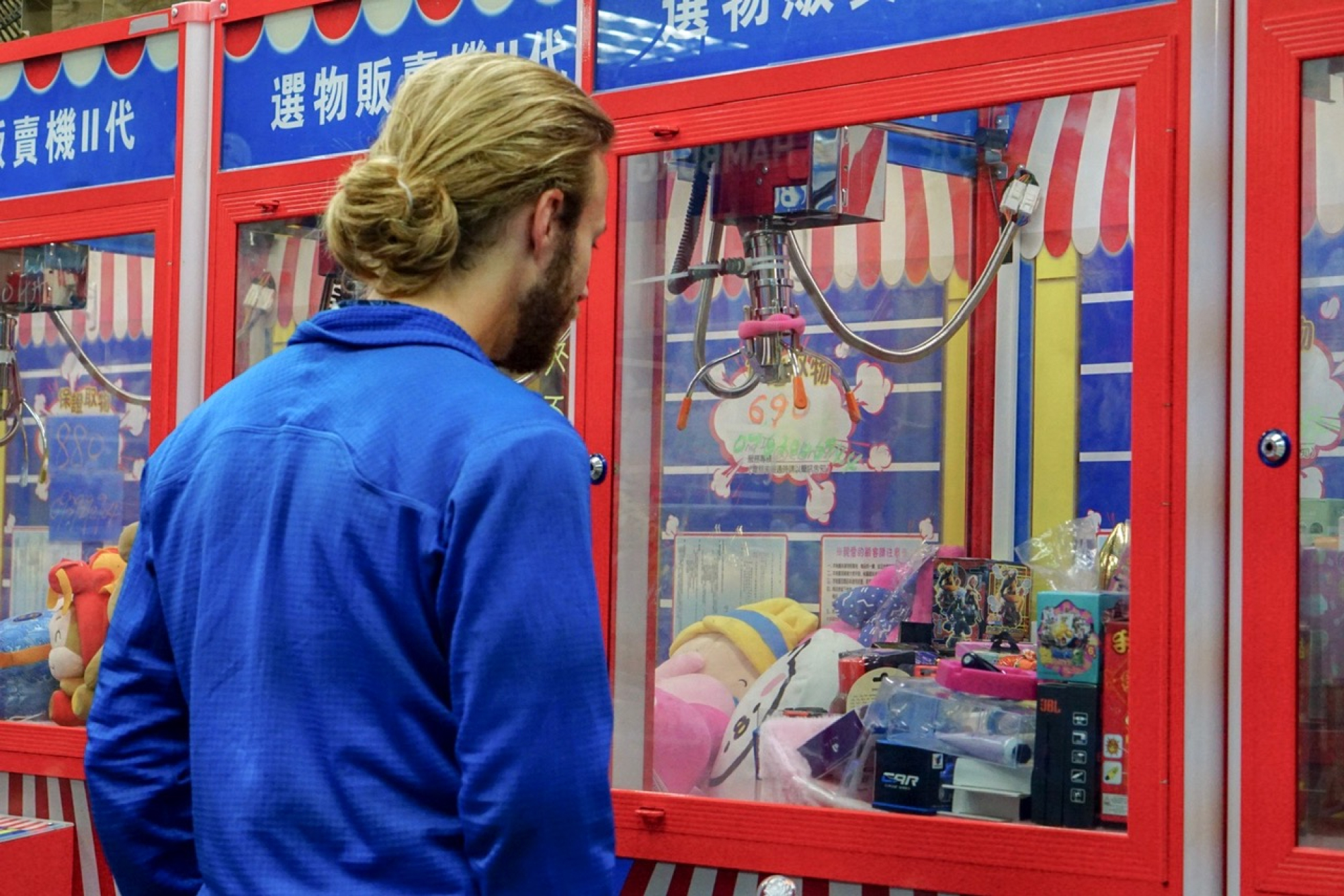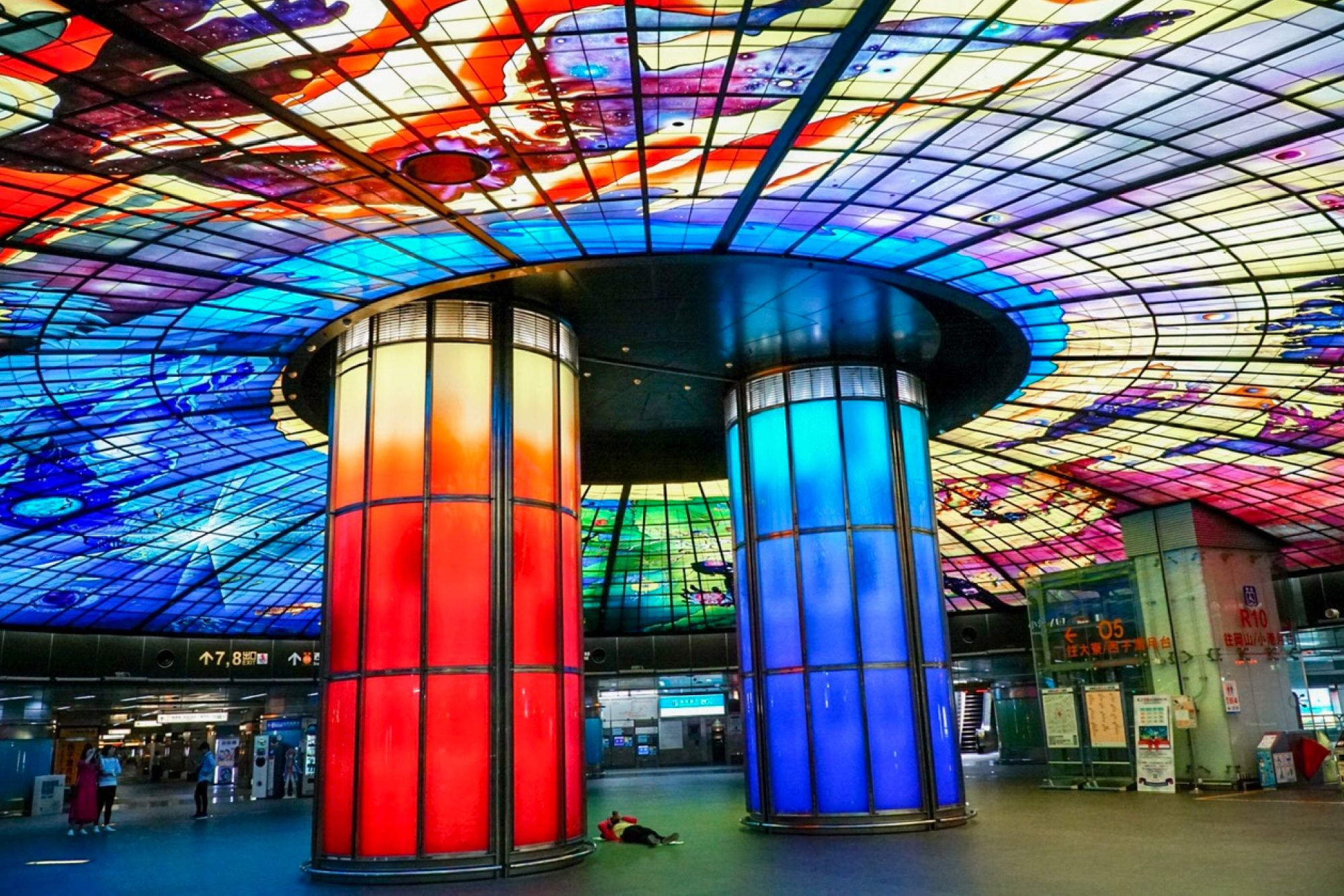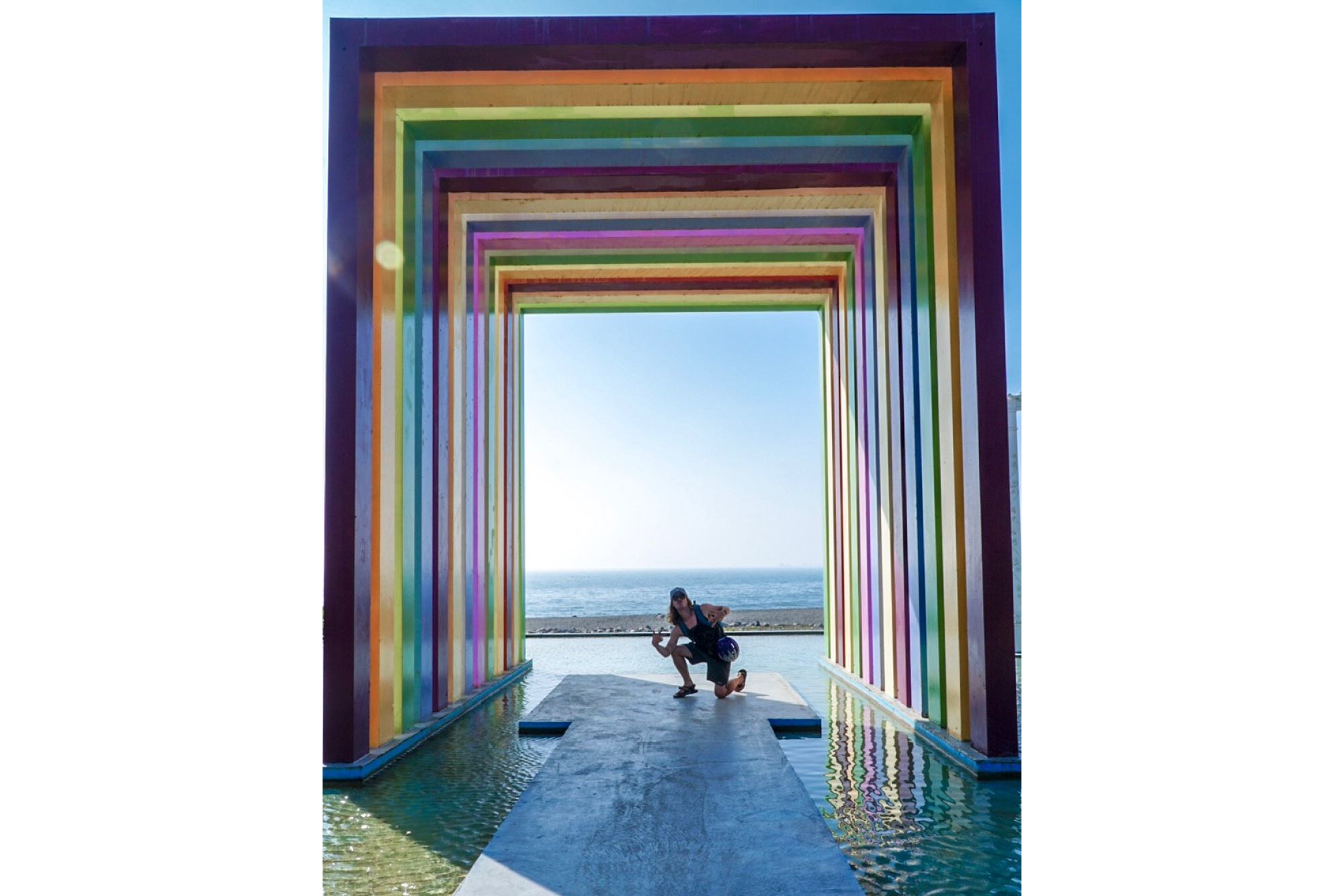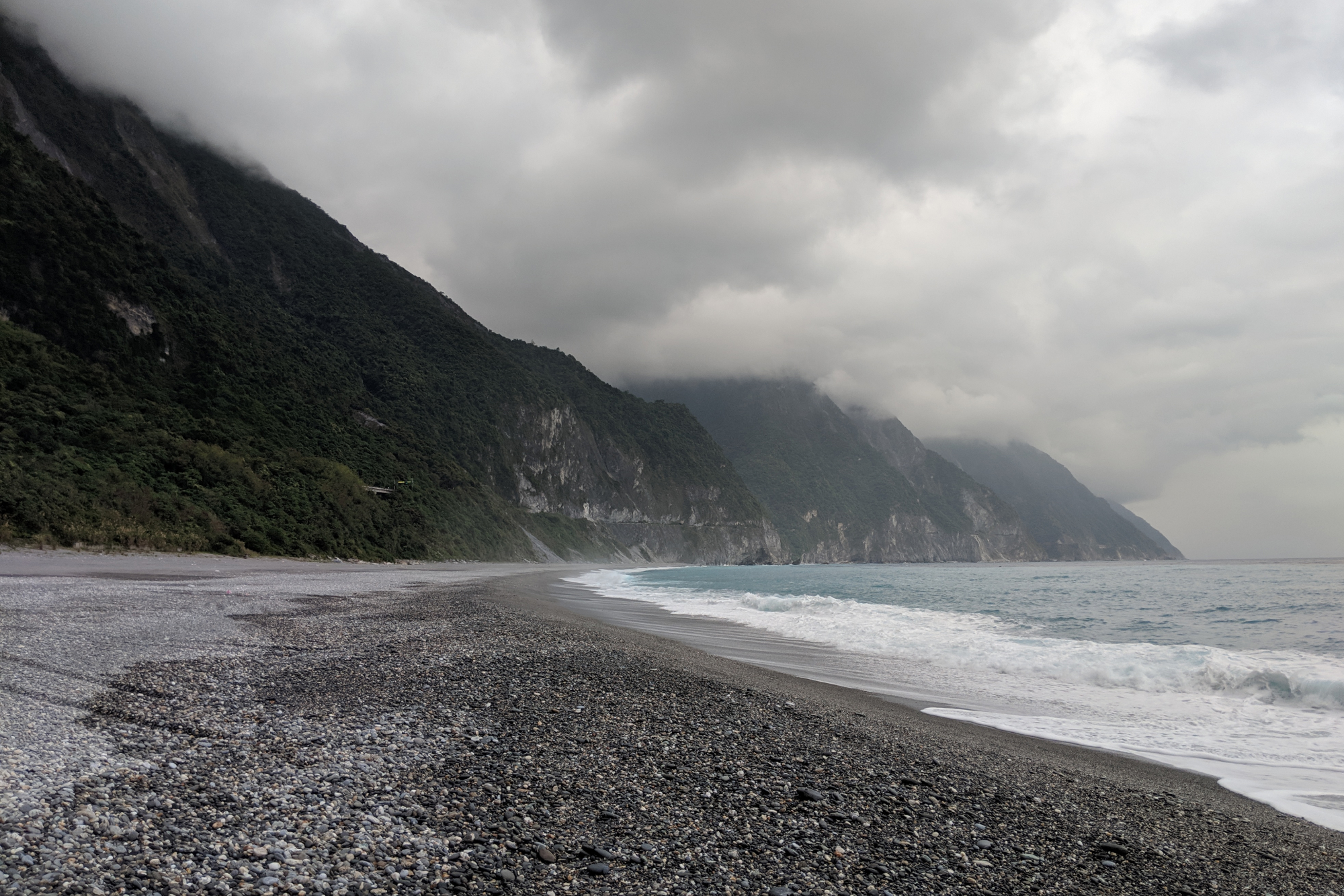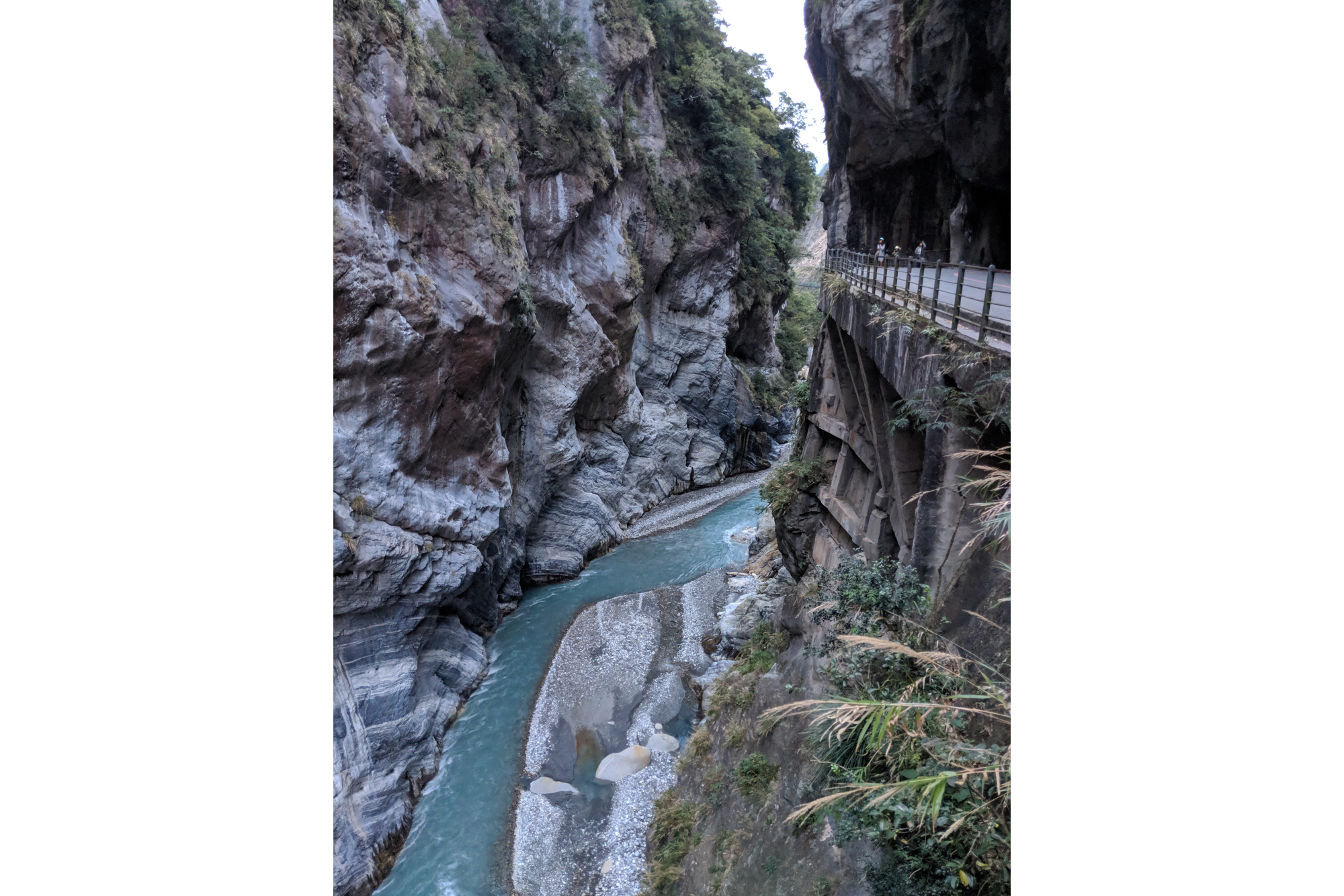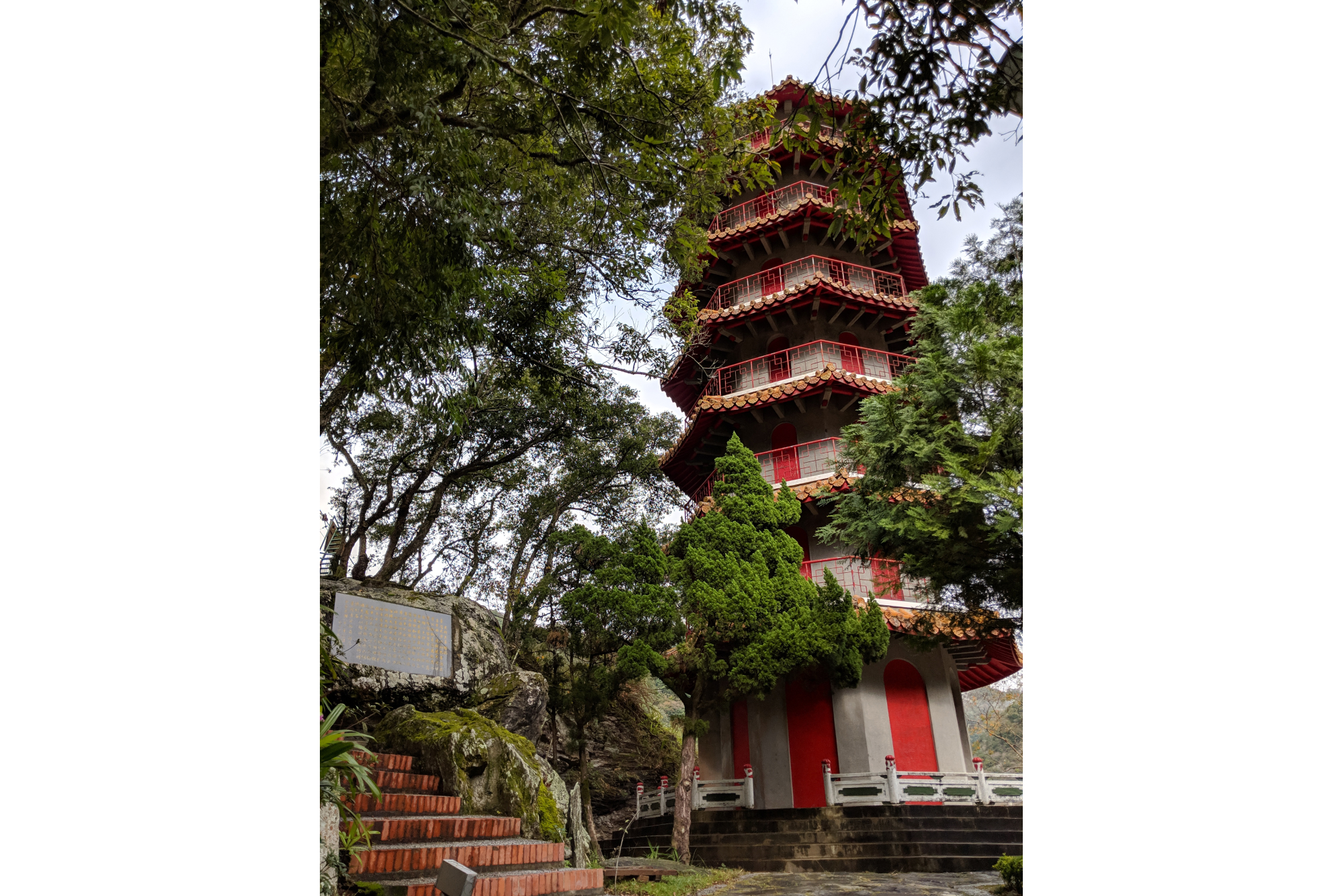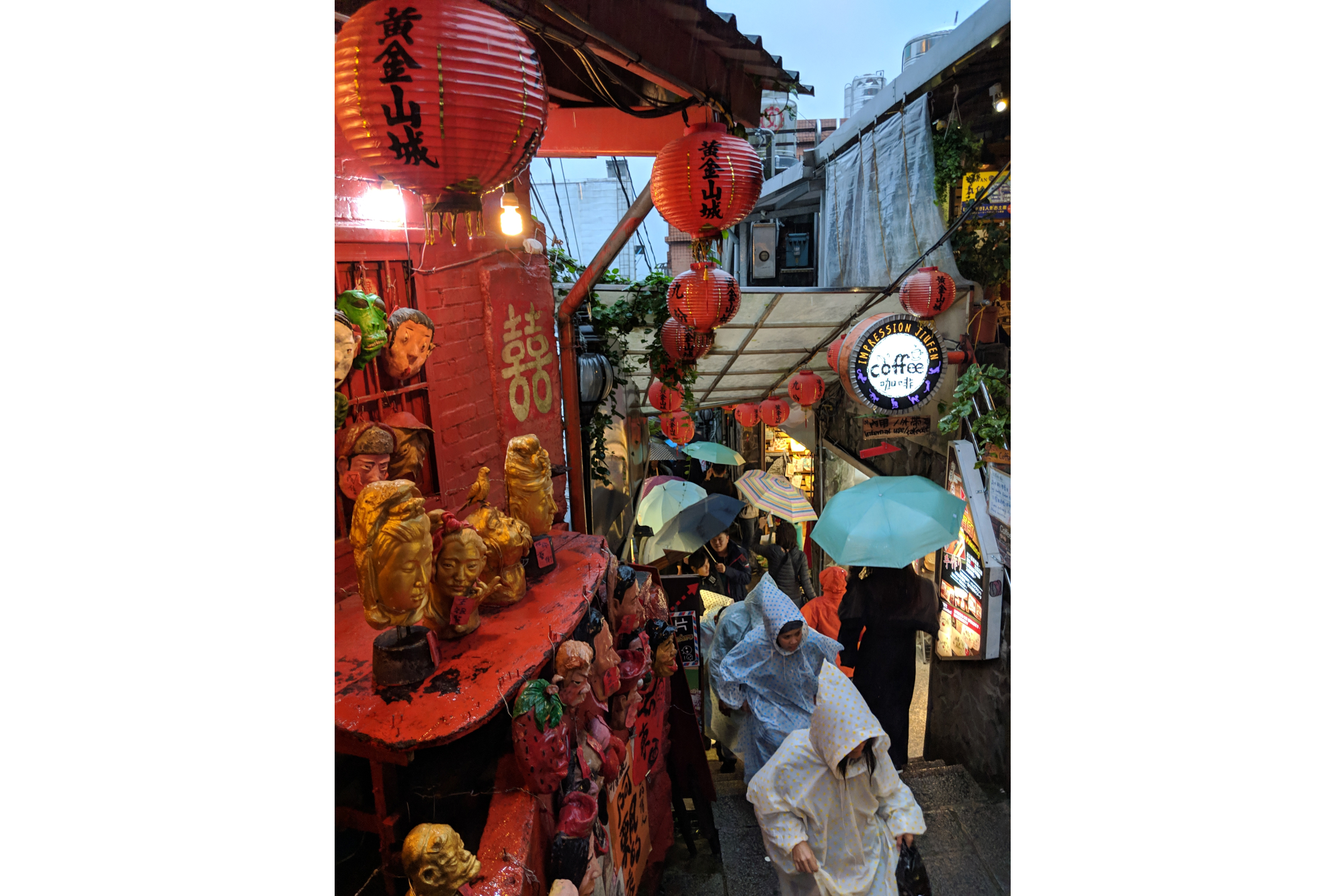The trail ended at a “closed” hot spring, one of which is situated in a small cave close to the shore of the river. We heard many people, including locals, scoot around the fence and head down to the river where there are 3 hot springs pool that feed into the river. This is one of the only spots you can get down to the river. Taroko Gorge National Park does not own the river thus all the trails are well protected above the river looking down. We got bridge leading to the ‘closed’ barricade and found one local man taking photos of the hot spring from behind the fence. We came to find out that he was the equivalent of a park ranger and escorts us out of the hot spring area. As we are leaving, we notice people getting out of their cars with towels and intentions of sneaking down the hot springs. They walk right by us and the ranger doesn’t bat an eye. Just our luck.
The following day we opted for a tour of Taroko Gorge by scooter with a few short hikes. Our favorite hikes involved hiking through pitch black tunnels that led to wide slot canyons where swallows nest, beautiful elaborate temples, and a bell tower on top of a gorge wall dedicated to all the lives lost in the building of the roads. Every time you ring the bell, the sound echos through the gorge and it is thought it soothes the spirits of the deceased. We shared the trail with several bus loads of Taiwanese tourists thus we had to duck and weave around several selfie sticks.
Our last day in Taroko Gorge involved a hike that re-opened that day. The Baiylang Trail leads to the Water Curtain, a tunnel that unintentionally exposed underground springs during the building process, creating a cascading wall of water you can walk through. At the entrance of the Water Curtain tunnel, many tourists were taking off shoes and putting disposable ponchos on while we just walked through with our rainshells and hiking boots. The entrance was pitch black with light reflected water falling from the ceiling and led to an opening looking out over the gorge to its natural beauty. Due to the trail just opening, we shared the wet tunnel with several Taiwanese tourists taking selfies in pitch black in their colorful plastic ponchos doing funny poses, which is exactly as hilarious as it sounds.
After the hike, we packed up camp, Tetris-ed back onto our scooter, and headed back to Hualien. We dropped off the camping gear but kept the scooter till the next day. Unbeknownst to us, we came back to a festival in Hualien that we are still trying to figure out what they were celebrating. Picture a red carpet fashion show with costumes 15-18ft high, elaborate human-powered carriages carrying doll figurines of what we think was Confucius with small fireworks coming out of the back, and a tribute alter at the end of the red carpet where the people in costumes payed tribute by dance battling in front of other Confucius dolls. We love Taiwan.
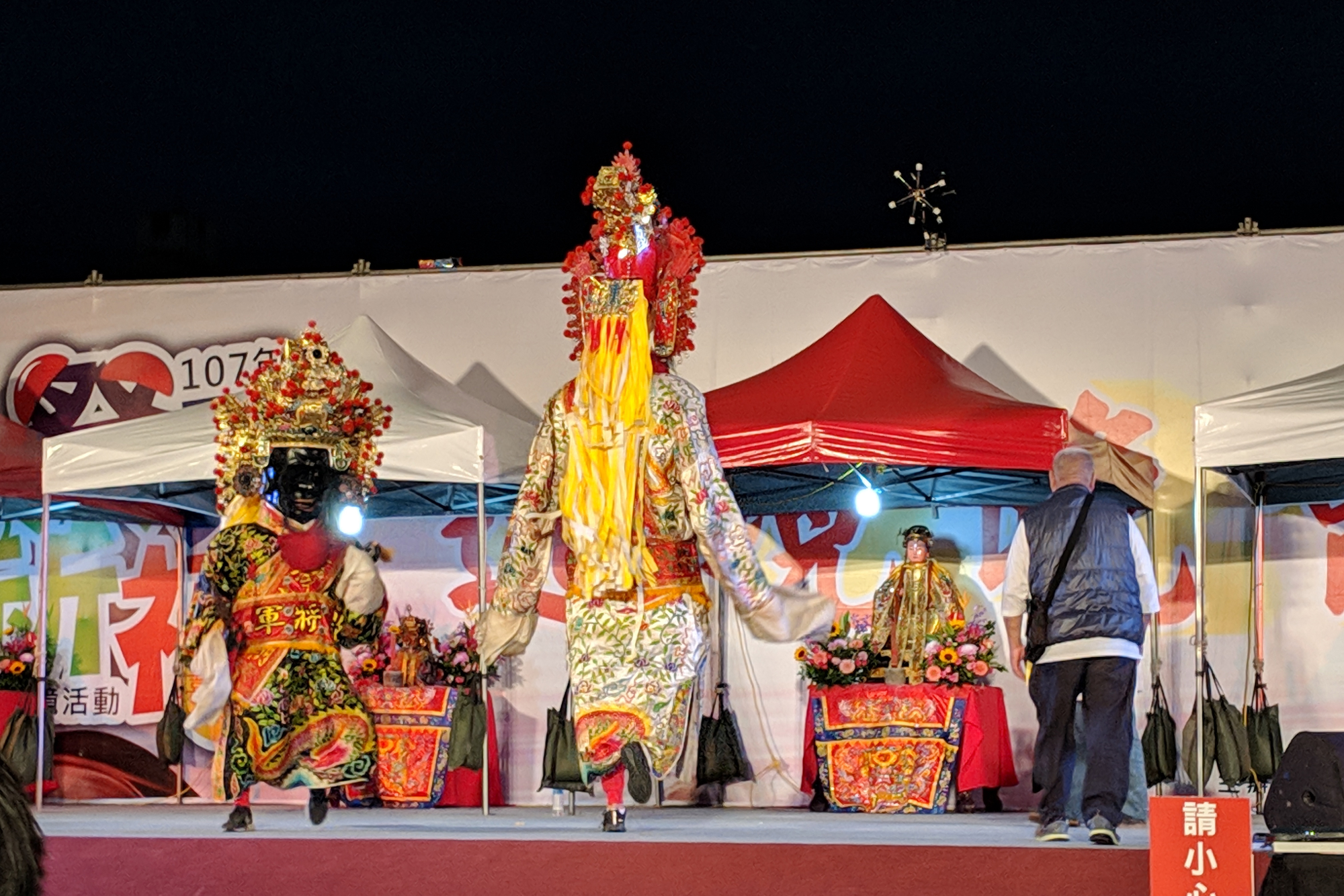
We ended our trip in Hualien by paying a visit to the karaoke boxes. Yes. A glass box, with the only purpose of singing your heart out with a headset and microphones for each person. We found this karaoke box tucked in the back of one of the claw machine stores. The claw machine store was completely empty when we started our 2 songs. When we left, it was full of adult men at around 9:30pm.
The next morning we returned the scooter and boarded a TRA back to Taipei.

